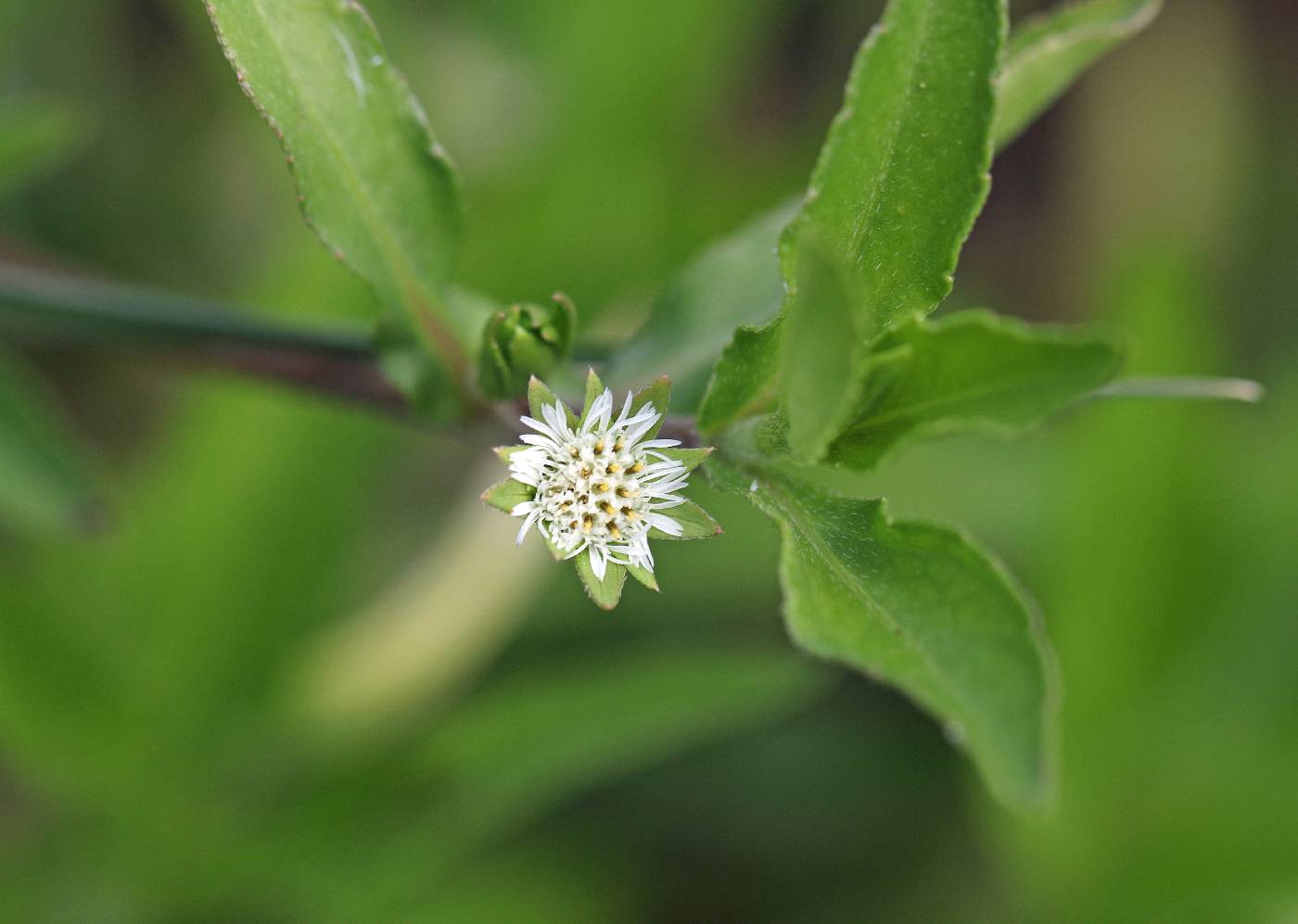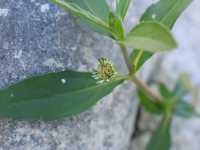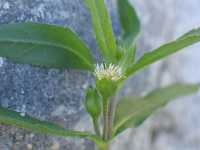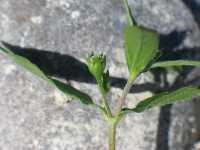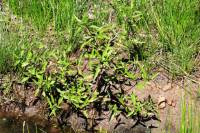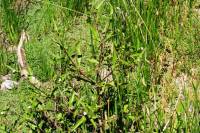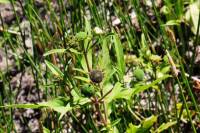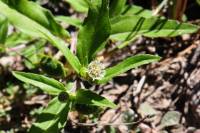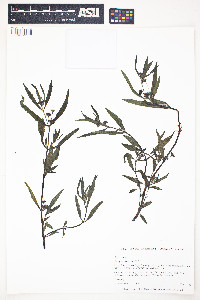|
Family: Asteraceae
false daisy
[ Eclipta erecta L., moreEclipta prostrata (L.) L., Verbesina alba L., Verbesina prostrata L.] |
Leaf blades 2-10 cm × 4-30+ mm. Ray laminae ca. 2 mm. Disc corollas ca. 1.5 mm. Cypselae ca. 2.5 mm. 2n = 22 (as E. alba). Flowering year round, mostly summer-fall. Wet places, often ruderal; 60-1600 m; Ont.; Ala., Ariz., Ark., Calif., Del., D.C., Fla., Ga., Ill., Ind., Iowa, Kans., Ky., La., Md., Mass., Mich., Minn., Miss., Mo., Nebr., N.J., N.Mex., N.Y., N.C., Ohio, Okla., Pa., S.C., S.Dak., Tenn., Tex., Va., W.Va., Wis.; Mexico; West Indies; Central America; South America; introduced in Europe, Asia, Africa, Pacific Islands, Australia. Weak or spreading, strigose annual, often rooting at the nodes; lvs lanceolate or lance-elliptic to lance-linear, acute, narrowed to a sessile or shortly petiolar base, remotely serrulate, 2-10 cm נ4-25 mm; heads 1-3 in terminal or axillary clusters on the many branches, the disk 4-6 mm wide in fl; invol bracts, or some of them, usually a little exceeding the disk; rays whitish, minute; achenes 2-2.5 mm, rugose or warty, slightly hairy above; pappus a nearly obsolete crown well removed from the margins of the truncate-topped achene; 2n=22. A weed in bottomlands and muddy places, native to the New World, now pantropical, and n. in our range to Mass., s. Ont., and Wis. Aug.-Oct. (E. alba; E. erecta; Verbesina a.)
Gleason, Henry A. & Cronquist, Arthur J. 1991. Manual of vascular plants of northeastern United States and adjacent Canada. lxxv + 910 pp.
©The New York Botanical Garden. All rights reserved. Used by permission. FNA 2006, Kearney and Peebles 1969, McDougall 1973 Duration: Annual Nativity: Native Lifeform: Forb/Herb General: Low annual herbs, 10-50 cm tall; stems leafy, procumbent or ascending, more or less strigose (with stiff appressed hairs). Leaves: Opposite; sessile to short-petiolate; blades linear, lanceolate, or elliptic, 2-10 cm long, with toothed margins. Flowers: Flower heads small and inconspicuous, radiate, on peduncles in the upper leaf axils, solitary or in clusters of a few; involucre (ring of bracts wrapped around flower head) hemispheric, 3-5 mm diamater, the bracts (phyllaries) 8-12 in 2-3 series, the outer phyllaries broader and longer, the inner narrow and short; ray florets 20-40, the laminae (ray petals) white and short (2 mm long); disk florets whitish, numerous, 1.5 mm high. Fruits: Achenes short and 4-angled, becoming corky on the angles; lacking pappus or topped with a tiny vestigial bristle-like pappus. Ecology: Found along streams and ditches, below 4,500 ft (1372 m); flowers June-September. Distribution: Widespread in North America east of the Mississippi River; also TX to CA and n MEX; introduced to the Old World. Notes: This easily overlooked annual herb thrives in wet, disturbed habitats like river banks and is widely distributed in the world's warmer regions. Look for the opposite leaves with toothed edges; the tiny white flower heads with short-stubby ray petals, the flower heads nestled in the leaf axils on short peduncles or elevated on longer peduncles; and the distinctly 4-angled, wedge-shaped seeds. Ethnobotany: Unknown Etymology: Eclipta is from Greek ekleipo meaning deficient, for the seeds lacking a pappus; prostrata means prostrate. Synonyms: Eclipta alba, Eclipta punctata, Verbesina alba, Verbesina prostrata Editor: LCrumbacher 2011, AHazelton 2016 |

